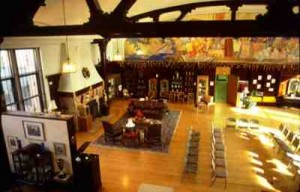Review by Ed Quillen
Outdoors – October 2008 – Colorado Central Magazine
Hiking Colorado’s Roadless Trails
by Penelope Purdy
Published in 2008
by the Colorado Mountain Club Press
ISBN 978-0-97605250-79
WHILE THIS IS A FINE small guidebook covering 20 trails scattered throughout our mountains, it’s also something of a political tract that argues for protection of roadless areas in our national forests.
What areas are we talking about here? There are formal wilderness areas which do not have roads, like the Sangre de Cristo Wilderness that extends along the spine of the range; these are set aside by Congress through legislation.
Then there are our regular national forests, with roads and campgrounds and logging and the like. Inside the national forests are areas of at least 5,000 acres which do not have roads — and those are the zones that Penelope Purdy explains in a long introduction.
Reading it will give you a good understanding of the thirty years of bureaucratic and political struggles over these areas, starting with RARE (Roadless Area Review and Evaluation) and continuing to the current controversies about natural-gas leasing.
In essence, the Forest Service can make an administrative decision to keep roads out of a given tract during one presidential administration, and reverse it during another. And once the roads are in, the parcel is no longer roadless, of course. Roads bring in people and invasive species, fragment wildlife habitat, and pollute creeks.
On the other hand, roads are how I generally get into the national forest, and most of my forest hiking is on roads, rather than trails. I feel safer on the road because if I stumbled and wrenched a knee or ankle, somebody could drive up to fetch me. But I certainly prefer that the road be relatively unused, since traffic and pedestrians (especially a pedestrian with a dog that is a car-chasing idiot) are not a good mix. If you turned to me for a guidebook, it would be something like “Best back-road walks in Central Colorado.”
Thus I can’t really review this the way I prefer to review a guidebook — and compare one of its descriptions with what I’ve seen myself. There are 20 trails listed here, all with topo maps in a compact form that slips easily into a daypack, or even a pocket.
One nearby trail that looked interesting (I wanted to test it with Martha and Bodie, but work and a late-summer cold intervened) was Salt Creek, five miles near Trout Creek Pass and Buffalo Peaks which “offer the casual hiker peaceful, gentle valleys lined with stands of pine, spruce, fir, and aspen below craggy ridges. East Buffalo Peak dominates the view to the northwest and the expanse of South Park is to the south.”
As for the route, “The trail begins as a double track, with a steep, rocky ridge on the right and a small stream to the left. The first stretch involves a steady climb of 362 feet. In July bluefax, cinquefoil, rose, scarlet gilia and paintbrush abound. At 0.5 mile, West and East Buffalo Peaks come into view. The trail levels out some, and a valley opens up at 1 mile. Aspen groves edge the trail offering stunning color in late September. At 1.5 miles, the trail passes through an unused gate and becomes indistinct in spots. It forks at 1.6 miles; the path to the left goes up the valley past a log shelter in 0.4 mile. Follow the trail to the highest point, 10,029 feet in 0.5 mile.”
Trail chapters also include driving directions to the trailhead, lists of relevant topographical maps, and GPS co-ordinates. Sprinkled through the book are the customary cautions about lightning, wildlife, pets, and the like.
So you can read this as a guidebook to some pretty places, or as a political pamphlet encouraging you to support protection of remaining roadless areas — or as both. It’s well organized and well written, and certainly worth your while if you’re looking for new places to hike, or for a clear explanation of the politics of Colorado roadless zones that sit outside designated wilderness.

